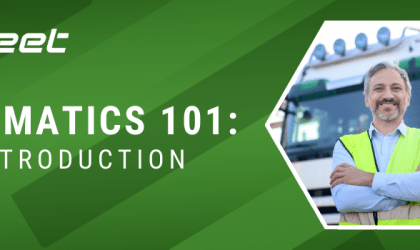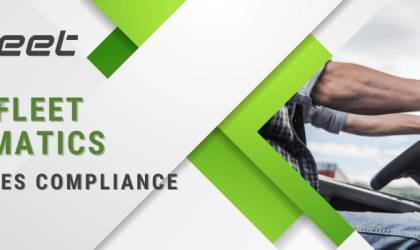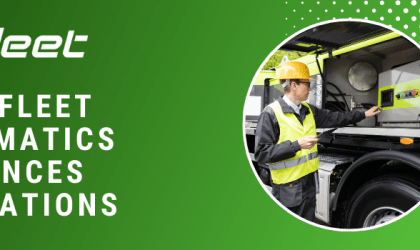What to Look for When Switching ELD / Telematics Providers
Switching from one ELD or telematics provider to another is not the easiest process. However, if you are having issues with your current provider, sticking with them simply because you are worried about making the jump isn’t good either. Once you’ve reached a decision, it’s important to ask the right questions to reduce the pain of switching and prevent any surprises. In this blog we will go over best practices when transitioning from one provider to another.
Investing in telematics for your fleet can be a significant undertaking. Before the final decision is made regarding which telematics provider to choose, there are usually countless demos, meetings, negotiations, and approvals. Once the vendor is chosen, there are then a new set of tasks that need to begin: planning out a telematics strategy, ELD implementation, and most importantly – measuring results.
Why Make the Switch
Almost all customers who implement telematics goes through a similar process. For some, it’s smooth sailing, unfortunately for others, it can be a little more complex. Regardless of how the process goes, customers often stay with their existing telematics provider for a variety of reasons:
- Long-Term Contracts
- Comfort Level
- Capital Expenditures for Hardware
- Back-End Integration
With that being said, sometimes there are compelling reasons why fleets decide a change is necessary – even if it requires a little extra work. The decision to change providers is normally sparked by a few reasons: ongoing hardware costs, reliability, technology, security, or monthly fees.
When vetting out potential partners it’s crucial to take several factors into consideration to make the best decision. The top four criteria to evaluate are: technology, access to data, partnerships with third-party partners, and security.
Evaluating ELD Providers: What to Look For
From a technological perspective, changing telematics hardware and software is often one of the most difficult pills to swallow. Significant investment was already made obtaining the devices, installing and maintaining the devices, and the education internally on how to use the system. Switching from one provider to another requires removing the old devices, installing now ones, and retraining your staff on how to use the new system.
No telematics company can eliminate all the pain of switching providers – however, it’s important to choose someone who is willing to work with you to reduce this pain as much as possible.
Telematics companies today receive data from the devices they sold to the end user. Some of these devices are proprietary and only specific to the provider who sold them. Some other devices are off-the-shelf meaning they are capable of sending data to other sources other than the initial telematics providers software platform.
1. Third-Party Device Integration Speeds Up the Transition Process
Make sure to ask providers about third-party integration (meaning the ability to pull data from a third-party telematics device into their system). With this, customers will often be able to use their existing telematic hardware as they move to a new software solution. With third-party integration, the telematics provider is able to gather key data points from many different hardware platforms.
Examples of data gathered from telematics and third-party device integration:
- Longitute
- Latitude
- Date / Time
- Ignition Status (on/off)
- Speed
- Auxillary Relay Status for up-to 8 Relays
- Device Data
- Engine / Diagnostic Data
Even more data:
- Tow Detection
- Low Battery
- Battery Voltage
- Starter Tamper
- Power Tamper
- Trip Count
- Temperature
- GSM Signal Strength
- Loaded Voltage
- Battery Level
- Successful Uploads
- GPS Fix Attempts
- Failed Uploads
- GPS on Time
This feature allows fleets to transition immediately to the new provider’s system without high costs and confusion. Then over time, if the existing devices fail or new vehicles are purchased, updated hardware from their new provider can be purchased.
This will also allow your internal staff to transition to a single software interface right away – avoiding having to utilize two different systems at the same time.
2. Third-Party Software Partners
The ability to share your data with third-party vendors is critical for the majority of fleets. It could be a maintenance system, a TMS provider, a remote diagnostic system, IFTA reporting system, and the list goes on.
It’s important your new provider understands that all businesses are unique, meaning different integrations are ideal for different businesses. Many providers simply don’t offer these integrations or only provide their customers with in-house packages. Regardless of your existing platform, make sure your new platform has the necessary integrations to optimize your business.
Some telematics companies are moving toward an add-on based approach where customers are able to easily see what companies are integrated and additional information on the vendor. Many think this is the best approach; customers have the option to utilize the telematics providers software plus the third-party vendors to truly optimize their business and accomplish their goals.
Your new partner should have a well-rounded partner network offering benefits to everyone: the provider, the partners, and most importantly, the end customer.
3. Access to the Data
Unfortunately, many telematics providers charge a substantial amount for end users to access their data via APIs, or even worse, prevents them from accessing it all together. To avoid these issues with your future provider be sure to check out their API access and any limitations.
Expandability is a must. Ask for a copy of their Software Developer Kit (SDK). This will explain how you are able to pull raw data from your telematics system in order to be utilized in third party systems. Even if you do not see a need for it today – it’s a good option to have as your business continues to evolve and your needs may change.
4. Security
When shopping around many people forget to ask about security. How does your potential provider handle the security of the hardware? The transmission of data? And the data stored at the server? Simply ask for the provider to give you a copy of their security documentation to review to make sure you will be protected.
As technology continues to change at a rapid pace, asking the hard questions today can save you significant pain in the future.
Interesting about what’s best ELD Provider for you and your business in the long run? Click here to find out.
Check out our comprehesive guide to Canadian ELD Mandate 2019
Original Article:
Making the Jump: Switching ELD Providers by: Scott Sutarik, Business Development, OEM Sales Manager at Geotab




